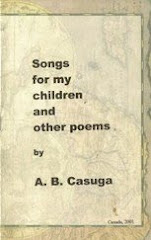PART 5 LITERARY CRITICISM: CRITICIZING TECHNIQUE IN FICTION
(What is Technique? What are the Elements of Technique?)
What is technique?
Technique refers to the manner in which the artist articulated and presented his selected materials in terms of his media and content.
Two aspects are important here:
1. Articulation --- how he put his materials together such that there would be an objectification and subjectification of the experience.
2. Presentation --- how he arranged the materials so that they would assume a clear, integrated, and harmonious form wherein the medium shapes the content, and vice versa. (These qualities are what characterize the beautiful, according to St. Thomas: claritas, integritas, consonantia. “Id quod visum placet.”)
When the artist articulates his materials, he is governed by certain rules of dexterity which vary from art form to art form, from Art Period to Art Period, and sometimes from artist to artist. Thus, the technique in painting would be different from poetry; although, one is aware’ of course, of certain experiments of the Surrealists, Symbolists, and Imagists in the visualization of their ideas in terms of the arrangement of lines and orthographic symbols on the printed page. Ideography has suggested a manner by which painting and poetry could make use of the same principles of visualization. 1
Among these rules of articulation, of course, are the rules of grammar which are fundamental. The rules of speech will go a long way in the determination of rhyme and rhythm which may prove helpful in the objectification of an experience. The rules of linguistic usage are part of those which govern the use of words, sentences, punctuations, and the like, in the work of art. There are rules of composition for the different fine arts. Literary composition postulates: effective sentence writing results in effective paragraphs provided there is an effective development of topic sentences; compositions are effective if they have unity, coherence, and emphasis.
These rules, of course, are a matter of convention, and the artist may choose to violate them for the purpose of amending them in order to arrive at a clearer manner of expression, hence, better communication.
Presentation refers to the arrangement of the selected materials such that they would have the order, scale, point of view, characterization, and plot arrangement which would be consistent to the demands of the artistic purpose of objectifying the aesthetic experience being conveyed to the appreciator.
Again, presentation would vary from art to art, and from Art Period to Art Period --- for instance, the presentation of sculpture is different from painting in that the former has three dimensions normally if it is the round, and the latter, two dimensions (the third, that of depth is simulated in terms of primary materials of colours, lines, and chiaroscuro).
For our purpose, we limit this discussion to technique in fiction. The elements of technique in fiction may be summarized as follows:
TECHNIQUE
A. Point of View: Omniscient, Protagonist, Objective Witness
B. Order: Chronological, Logical, Psychological, In Medias Res (ongoing action). Arrangement of actions in the plot: exposition, initial action, complications, turning point, climax, denouement (resolution).
C. Characterization: Direct, Indirect, Physical, Psychological, Dialogue, Exposition, Testimony of other characters
D. Scale: Length of story, length of episodes, narratives, expository sections, paragraph and sentence structures, words as they appear on page
E. Other Techniques: From literary tradition and practices, from favourite authors, etc.
Since technique is the most apparent and external aspect in the objective form (the story, poem, novel, drama), it should receive the artist’s greatest attention. An interesting form is made doubly so by an interesting technique, the art work’s faces, as it were.
Note:
1. Modern poetry makes use of ideographic devices to visualize on the page an abstract idea. The Surrealists, like Apollinaire, pioneered in this. The Imagists, under the influence of T.E. Hulme, also practised this. Ezra Pound, Oscar Williams, William Carlos Williams, E.E. Cummings, and even D. H. Lawrence used this device. It takes the form of orthographic arrangements on the page in order to concretize an otherwise abstract idea or mood, whatever it is the artist would like to convey. Ideographs like Chinese and Japanese characters “picture” ideas with the strokes of the arranged lines.
Next: Sectionalized discussions of the Elements of Technique in Fiction, and the artistic norms that make them effective. This Section One on Criticism of Fiction is rounded up by a Practicum.
Section Two of Literary Criticism will be on the Criticism of Poetry.
Hunger Wakes Me
-
In the hours between midnight and morningI dream of shadowed hills, the
scent of night-blooming datura spilling over our old home.What was the
question tha...
2 hours ago











No comments:
Post a Comment